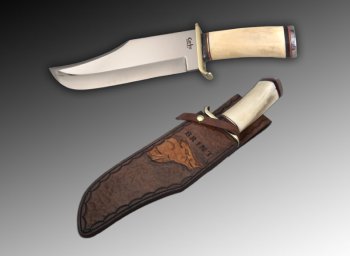HELLGAP
Dealer - Purveyor
How many of you use white cow bone for handles. Have you ever cut it up yourself. I would most likely whiten it bleach it with borax and then dry it cut it to size and stabilize it if needed. Im just curious if anyone is taking bones from butcher shops . I am asking cuzz last weekend went out shot 400 gophers and saw 4 dead cows from winter kill . the bones were to say the least awesome fresh white hard and not scaling . What are the best bones to take. I am looking at the lower leg bones front and back legs. I think they would make decent scales. Ive never used bone lots of horn rither deer moose elk and buffalow . Ide like some feed back as to is its too much hassle to make into scales. Kellyw

